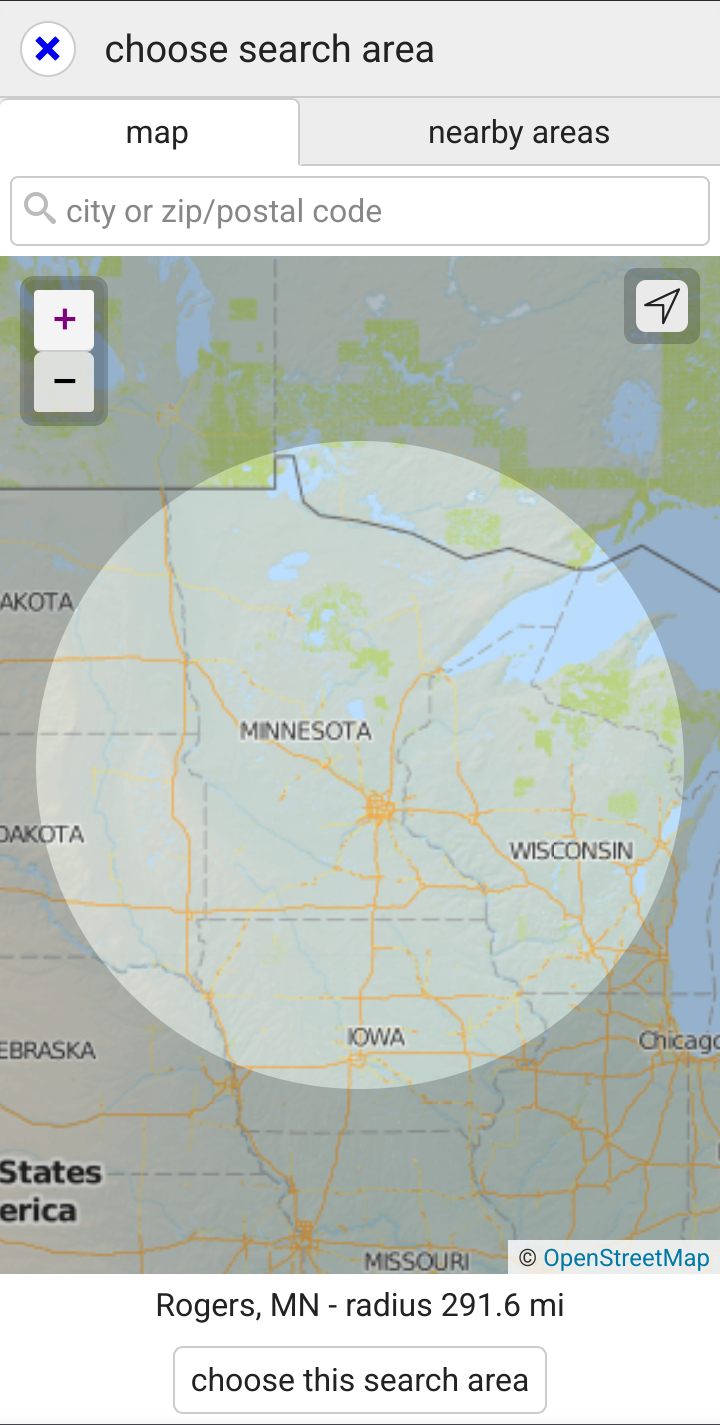

Such a shame that so few people know how to ride a horse these days. You still see them across the countryside and in many cities, but most people choose not to learn.


Such a shame that so few people know how to ride a horse these days. You still see them across the countryside and in many cities, but most people choose not to learn.


F-Droid works […]
[…]
[…] that’s going to severely limit the potential userbase for that package.
I don’t think most developers who are putting their Open-Source apps on F-Droid have any minimum user threshold.


Agreed. I’ve made a day trip to the neighboring state to buy a used car from a CL listing, but I probably wouldn’t travel to the other side of the country for it.
Similarly, for many things I wouldn’t travel more than an hour to get them.
The distance radius really needs to be adjustable per search to be useful outside of densely populated areas.


It seems like on CL the city labels are mostly for human readable convenience and behind the scenes it’s by distance. You can set a distance from any point:



One thing I would find valuable is mechanisms to dissuade the listings with obviously false prices. So many things on CL that aren’t really free or $1.


My use of eBay is closer to my use of Craigslist instead of being like an auction. I don’t like to wait for the long bidding windows used online. I also don’t like haggling on prices. In this case, people post what they’re selling, and if I decide to buy it a third party payment platform is used to transfer funds.
The differences are that CL is usually items I pick up personally instead of being shipped (but not always), and some CL sellers only accept cash. I have also picked up eBay purchases locally.


Which of their actions do you think portrays a political alignment?


Couldn’t they also have not voted?
Someone makes a good product and then sells it in a store. Even if they do nothing else and buy no ads, a marketing wank somewhere would apparently want to take credit for the maker’s work.


Thanks for the pointer! I took the opportunity to learn a bit about more recent NNTP by reading the standard: RFC 3977. It looks like nntp v2 circa 2006 added MIME encoding, so I would guess that may be how a service provider would differentiate.
I haven’t used Usenet since the turn of the century. Back then it was all text (including every article under alt.binaries), and even pirated media needed to be split into a multi-part format (often rar) then each part uuencoded so it could be included in an article.


Does your ISP not give your router a public (even if dynamic) IP? If not, then after your router you’d be double-natted right? Yuck!


What do you consider large files? Isn’t the article size usually limited to something like 1mb (it’s been a while since I used Usenet)?
So it would technically be about the number of articles rather than the eventual size of the combined archive? At the core it’s all still text right?


My dialup ISP in the 90s included Usenet.
Are you saying that physical attraction is the only valid type of attraction?


The patent office has long said they’re unable to attract and retain the expertise needed to evaluate novelty in any given field, and so the courts are left to sort it out.
I wonder how could a government agency not have the funding it needs? /s
But they are just as directly related.
It doesn’t matter how these units were originally defined. They have all been redefined as science progressed. As long as you relate the arbitrary unit to a constant it can be translated.
It might be funny if it were true, but it’s just a sad show of ignorance. It is exactly as possible in one as in the other for obvious reasons. It’s just not as easy to memorize.
To be specific:


That saying too often gets used as an excuse to not even try moving away from patronizing a harmful business, as though it isn’t worth any inconvenience since we’re screwed no matter what.
Firstly, you should say please when you’re asking for something.
The claim was made as if they know exactly the materials the thugs’ gaiters are made of. Unless they are an insider of that group, it’s way too presumptuous.
Common natural or synthetic fabrics aren’t as effective at blocking modern facial recognition as anyone might assume.
Here’s a couple examples of someone putting in a bit of effort to actually test both common and purpose-built products against facial recognition.